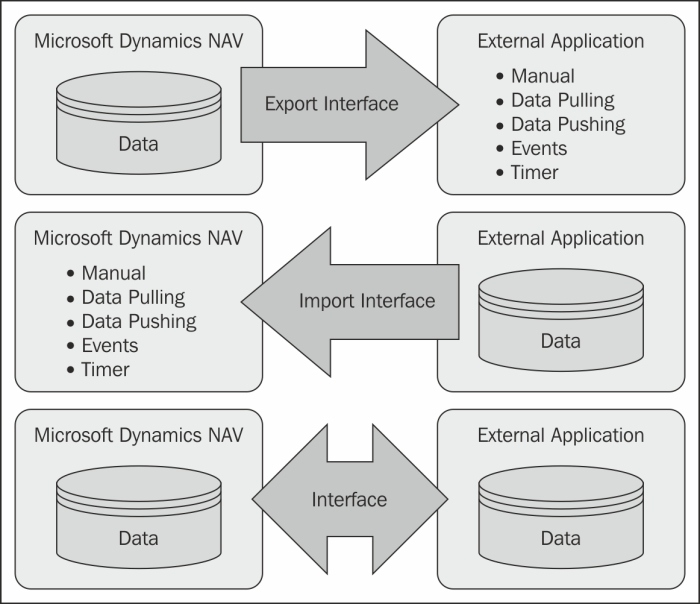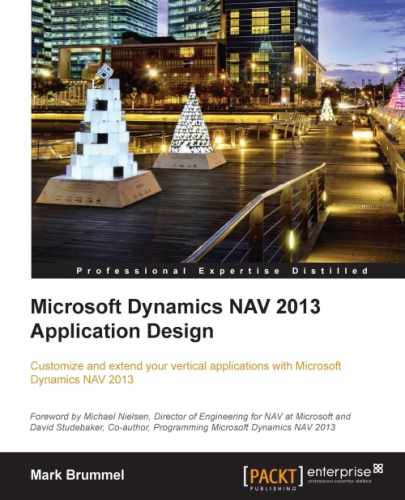When the first version of Microsoft Dynamics NAV for Windows was released in 1995, the system was very closed. It was possible to import and export data using flat text files and that was basically it. These flat text files were placed on a floppy disk and sent by postal mail. Internet and e-mail were just coming, large USB sticks were a dream, and when the previous version of this book was released in 2009, OneDrive and Azure where being invented.
Since then, the world has changed tremendously. Internet, e-mail, SQL Server, .NET, and Azure changed the way we think about interfacing with applications and we are still changing. Today Microsoft Dynamics NAV 2013 has a completely open database and supports a wide range of interfacing possibilities, which we will learn in this chapter.
Version 1.0 of Navision ran on Windows 95, which later became an industry standard and for more than a decade, Windows was the only serious platform. Today, business people use iPads and Android tablets. Microsoft Dynamics NAV 2013 is one of few ERP platforms that can run cross-platform on all devices, even supporting login using Google or Facebook credentials.
In this chapter, we will first discuss the available interfacing technologies and the interfaces available in the standard product. Then we will talk about interfacing methodology and how to create reliable interfaces.
At the end of the chapter, we will create some sample interfaces and see how the future will further improve interfacing.
After reading this chapter, you will have a good understanding of what interfaces the product supports out of the box, what interfacing technologies to use, and how to design a solid business to business interface.
When discussing an interface, we usually start with the technology, but before that, some other basic questions need answering, such as the following:
- Does it need to import, export, or both?
- Is it started manually or automatically?
- Is the interface timer or event driven?
Let's discuss these questions.
The first question is whether the interface should only export data from Microsoft Dynamics NAV or whether it would also import data to the system that then needs to be processed.
When importing and exporting, the data process can be started manually by an end user using data pulling or data pushing. The interface can also be event- (real time) or timer-driven (asynchronous).

When an interface is manual, the first application has an export process and another application has an import process. The end user first manually starts the export process and then manually starts the import process in another application, usually saving the data to a flat file. This is a classic approach to interfacing.
An example of manual interfacing is exporting telebanking information from Microsoft Dynamics NAV or sending XBRL files to your accountant.
When using data pulling to export data, the interface is started from an external application. This application will read the data from the database and process it.
When using data pulling to import data, the interface is started from the application, which reads and processes data from another application.
If an interface uses data pushing, the exporting application writes the data to the other data source. This method is used when the data in the other application does not need further processing. A typical example is exporting data from Microsoft Dynamics NAV to Microsoft Office applications such as Word or Excel.
